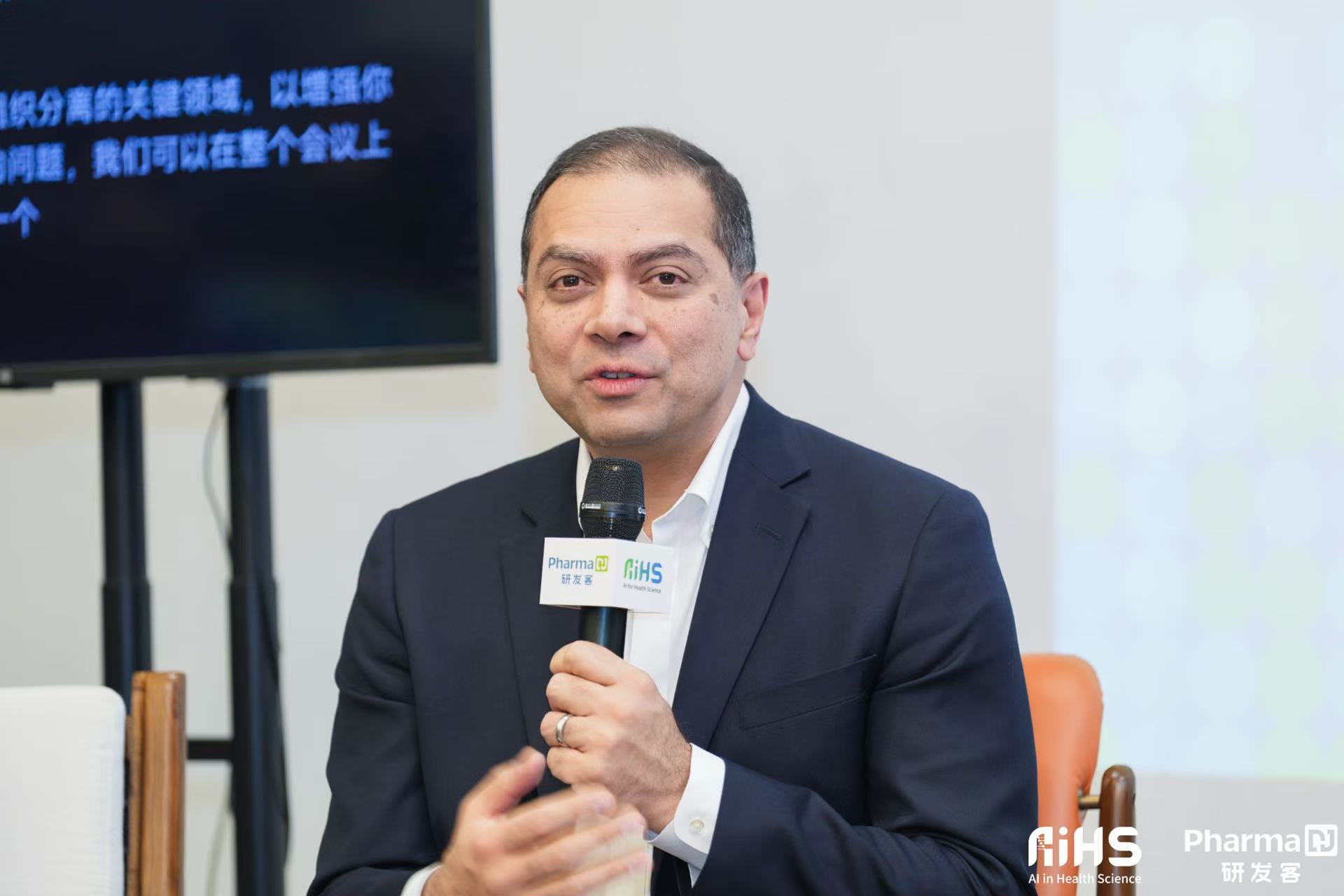Eli Lilly has recently been busy signing up AI partners to reinvent itself as an AI-powered innovator for novel therapies. In a recent interview with PharmaDJ in Shanghai, Ramesh Durvasula, Lilly’s senior vice president at R&D IT, detailed the company’s AI strategies in R&D.
AI-driven R&D
Generation after generation, Lilly has embraced new technologies to find novel treatments. In this generation, it is all about AI. AI implementation is holistic across departments at Lilly, but it is the R&D department, particularly in early discoveries, that could gain significantly from AI incorporation.
Ramesh Durvasula
“In the drug discovery space, our focus is on high quality molecule designs to find better medicines,” Dr Durvasula said. For example, a program called model driven drug discovery allows Lilly’s scientists to leverage a generative AI for designing a wide array of ideas in small molecules before filtering them down to the most promising recommendations.
“You couldn’t achieve it without AI,”he emphasized.
The key for decision-making, however, lies not only in running AI calculations but in combining the best of AI with the best of human intelligence (HI).
“Understanding how to combine and leverage the best of AI and HI is crucial for us,” Durvasula said, stressing all the critical decisions are still made by its scientists despite powerful AI analysis.
Faced with an overwhelming number of potential candidates, Lilly uses a four-pronged approach - cost, value, risk and feasibility- to prioritize its projects. “We consider the cost of a project, the value we may realize, the risk of making wrong decisions from AI and the technological feasibility. Finding the balance among the four factors is essential for us to create our project portfolios, ”said Durvasula.
Seeking the right partner
To get the best AI technologies for its R&D, Lilly has been actively seeking partners all over the world. The most recent deal was signed in October last year with Insitro, an US biotech specialized in applying machine learning to drug discovery. Insitro will work with Lilly to discover molecules for some metabolic diseases such as metabolic dysfunction-associated steatotic liver disease.
Lilly’s other AI partners include OpenAI, Genetic Leap and Alphabet’s Isomorphic Labs. In China, Lilly picked up XtalPi to advance early stage discoveries. As Lilly continues to seek cutting edge AI technologies, Durvasula shared the pharma’s three criteria for potential partners.
First, it is expertise. “It has to be a world-class, top-level expert in AI to match Lilly’s own expertise in drug discovery,” he said.
The next is purpose. For Lilly, the purpose remains constant - uniting caring with discovery to create medicines that make life better for people around the world.
“Our partners’ purposes must complement ours, and our purpose must be meaningful to theirs,” he said.
The third one is the commitment to a deep, long-term collaboration. “Our purpose is to cure diseases and it’s a complex and lengthy process. Partners must realize it and work closely with us to modify their AI products to meet our needs,” he said.
Challenges remain
Working with a big pharma like Lilly entails some challenges, among them are user experience (UX) for scientists and data privacy, according to Durvasula. He took ChatGPT as an example.
“It is the Chat of ChatGPT that makes it popular. It underscores the importance of UX,” he said, adding partners need to deliver their AI technologies at the right moment and in the right context to maximize their value for scientists. “AI must be integrated into scientific workflow seamlessly because good UX makes the science more effective.”
Data privacy is another vital concern. While working closely with its AI partners, Lilly ensures robust data protection.
“We are highly sensitive to our data so it has all the legal and technical protection in collaborations with our partners,” he said.
Embracing better AI
Looking ahead, Durvasula expects to see improvement in two key areas in the next five years. One is UX, which should better support scientists in a complicated technical environment. The other is the quality and volume of data.
“It’s possible that we will generate more data in the next five years than in the past 25 years,” he said.
Just as large language models that are trained on vast datasets available on the internet, Lilly also needs data to train its models. While high quality scientific data is not always available online, data generation could get more sophisticated as instruments are getting better, Durvasula said.